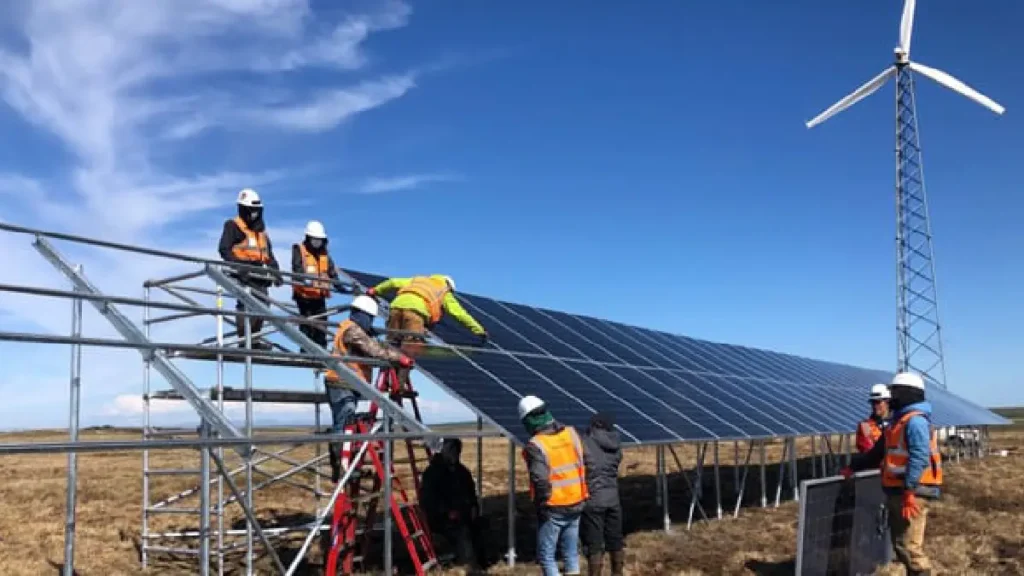Norway has initiated a groundbreaking project to install solar panels in its Svalbard archipelago, a region characterized by round-the-clock darkness throughout the winter season. This pilot project aims to facilitate the transition to green energy for remote Arctic communities.
Positioned neatly in six rows within a field, a total of 360 solar panels will begin generating electricity for the Isfjord Radio, a former shipping radio station converted into a base camp for tourists. The Svalbard archipelago, also known as Spitsbergen, is situated approximately 1,300 kilometers (800 miles) from the North Pole and is accessible primarily by boat or helicopter, weather permitting.
Mons Ole Sellevold, a renewable energies technical adviser at the state-owned energy group Store Norske, described this project as what they believe to be the world’s northernmost ground-mounted photovoltaic (PV) system. It is the first instance of deploying solar panels at this scale in the Arctic. Another 100 solar panels have been placed on the radio station’s roof, aiming to fulfill around half of the station’s electricity requirements while reducing its CO2 emissions.
During the summer, the region experiences abundant sunlight, featuring a “midnight sun” that never sets. Solar panels in the Arctic also benefit from the “albedo” effect, where snow and ice reflect sunlight, as well as low temperatures that enhance their efficiency. In contrast, the region is immersed in complete darkness from early October until mid-February during the winter, making it impractical to entirely eliminate fossil fuels at Isfjord Radio.
Store Norske is exploring additional alternatives, including wind farms, to further the station’s transition to green energy. This initiative is driven by environmental concerns and economic factors, given the cost and logistical challenges of diesel usage in the remote region. Solar panels are cost-effective, require minimal maintenance, and have long lifespans.
Moreover, this installation serves as a pilot project to evaluate whether this technology can be adopted by approximately 1,500 other Arctic sites or communities lacking access to traditional electricity grids. These regions also require a transition to sustainable energy sources.
The overarching goal is to establish Isfjord Radio as a testing ground to develop Arctic-proven technology that can subsequently be applied in similar locations. The Arctic has experienced nearly four times the rate of warming compared to the rest of the world over the past four decades, leading to accelerated ice melting and ecosystem disruptions. This initiative seeks to address environmental challenges while providing a model for sustainable energy in remote Arctic communities.

